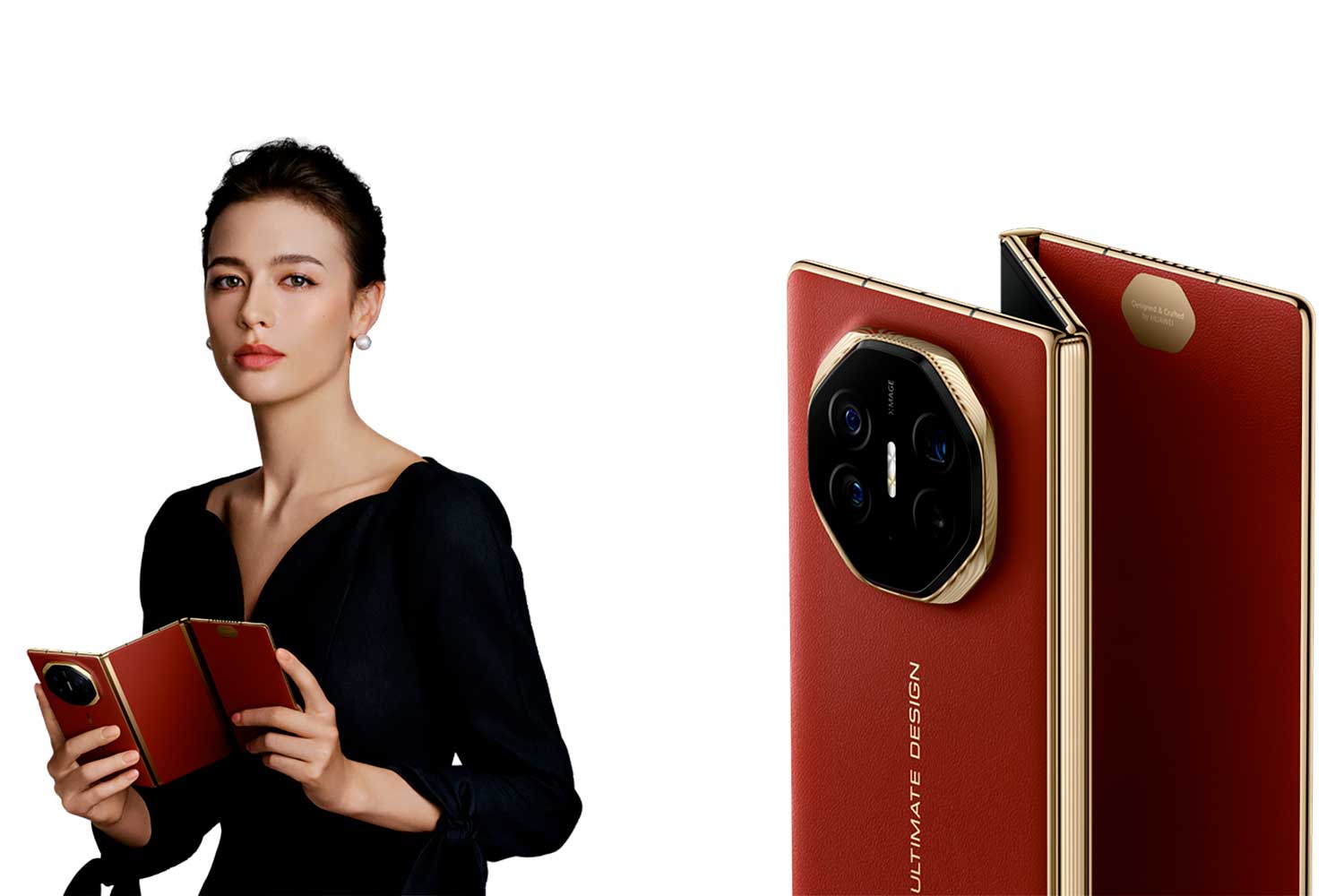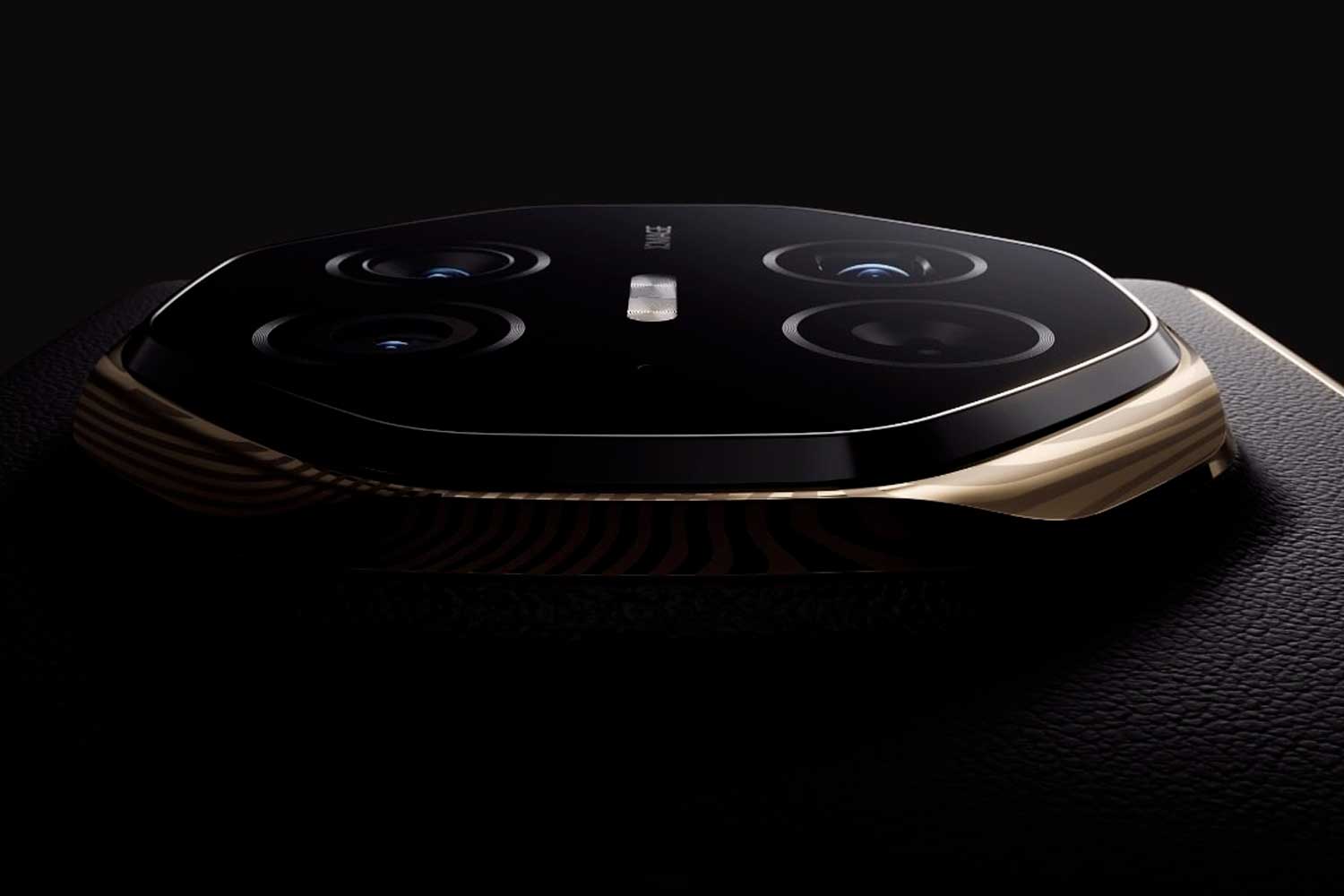Forget the Samsung Galaxy Z Fold6, Honor Magic V3 or iPhone 16 and 16 Pro, the back-to-school sensation comes to us from China. Huawei was on time to unveil the Mate XT, the first smartphone that folds into three to be marketed. With its “Ultimate Design”, the Huawei Mate XT pushes the boundaries by integrating two hinges to take the shape of a small accordion and open up new possibilities. From the appearance of the folding smartphone in the “book” format (fold), the idea was to reduce the boundary between the traditional smartphone and the tablet. With each version, we see that the folding smartphone seeks to get closer to its big sister by offering ever more multitasking and productivity options. The Mate XT takes a new step with its two hinges, compared to a single hinge for all Fold models on the market.
Two folds to transform into a tablet
The leftmost part serves as the 6.4-inch “main” display when the phone is fully folded. One hinge folds inward while the other folds outward, creating a Z-shape. It’s a nice nod to Samsung and the Z Fold, but the accordion design is mostly the same as what’s been seen on prototypes of three-part foldables. Huawei says its phone is 12.8mm thick when folded, slightly thicker than the latest Samsung Galaxy Z Fold 6 (12.1mm). The Mate XT, however, is thinner than the Z Fold 5, which is 13.4mm thick when folded. When fully unfolded, the chassis is just 3.6mm thick.
Quite an achievement for the Chinese giant’s device, which hides a 10.2-inch OLED screen when fully unfolded. The LTPO panel displays a definition of 2,232 x 3,184 pixels in 16:11 format, which is much larger than the 7.6 to 8-inch panels currently available. Huawei also offers an intermediate option with a screen size of 7.9 inches by partially unfolding the Mate XT. Despite significant technical choices to be made in light of this new format, the Mate XT offers a solid technical sheet.
Strong technical arguments
It has a 5,600mAh battery, with support for 66W wired charging and 50W wireless charging. As it stands, we obviously wonder about the real autonomy of this smartphone with the gigantic screen. We nevertheless note that it is one of the thinnest batteries in the world, at only 1.9 mm thick.

Its manufacturer does not elaborate on the nature of the chip that powers the Mate XT, but everything suggests that it has the same Kirin 9010 SoC as the Pura 70 series. Even if it does not necessarily compete with the latest Snapdragon 8 from Qualcomm, this “home” chip ensures support for 5G and satellite communication.
Unboxing pic.twitter.com/eqiKUwwrP7
— MyplaceMyworld (@myplace_myworld) September 10, 2024
In the photo, the imposing block is not there to make up the numbers and offers a solid camera system. There is a 50 Mpx variable aperture main sensor (1/1.56 inch, f/1.4 to f/4.0), associated with a 12 Mpx ultra wide-angle (f/2.2) and a 12 Mpx periscopic telephoto lens with a 5.5x optical zoom. An 8 Mpx camera is present (on the leftmost part of the screen) for selfies and video calls. The Mate XT supports wifi 6, Bluetooth 5.2 and runs on the HarmonyOS 4.2 overlay. The latter replaces the EMUI operating system on the Chinese market.

A high price and a release only in China
Aimed at the Chinese market, the Huawei Mate XT is currently only targeting this country. It arrives at a high price with a starting price of 19,999 yuan in China, or around 2,500 euros excluding VAT, for the 16 GB RAM and 256 GB storage version. Expect to pay 23,999 yuan (around 3,050 euros excluding VAT) for the model with 16 GB RAM and 1 TB storage. A record price for a smartphone that is not really like the others.
We obviously hope to discover this device outside of China, but the manufacturer remains cautious on this subject. As a reminder, Huawei remains weakened by the American embargo internationally and has been refocusing on its domestic market for several years.
Source: www.journaldugeek.com


